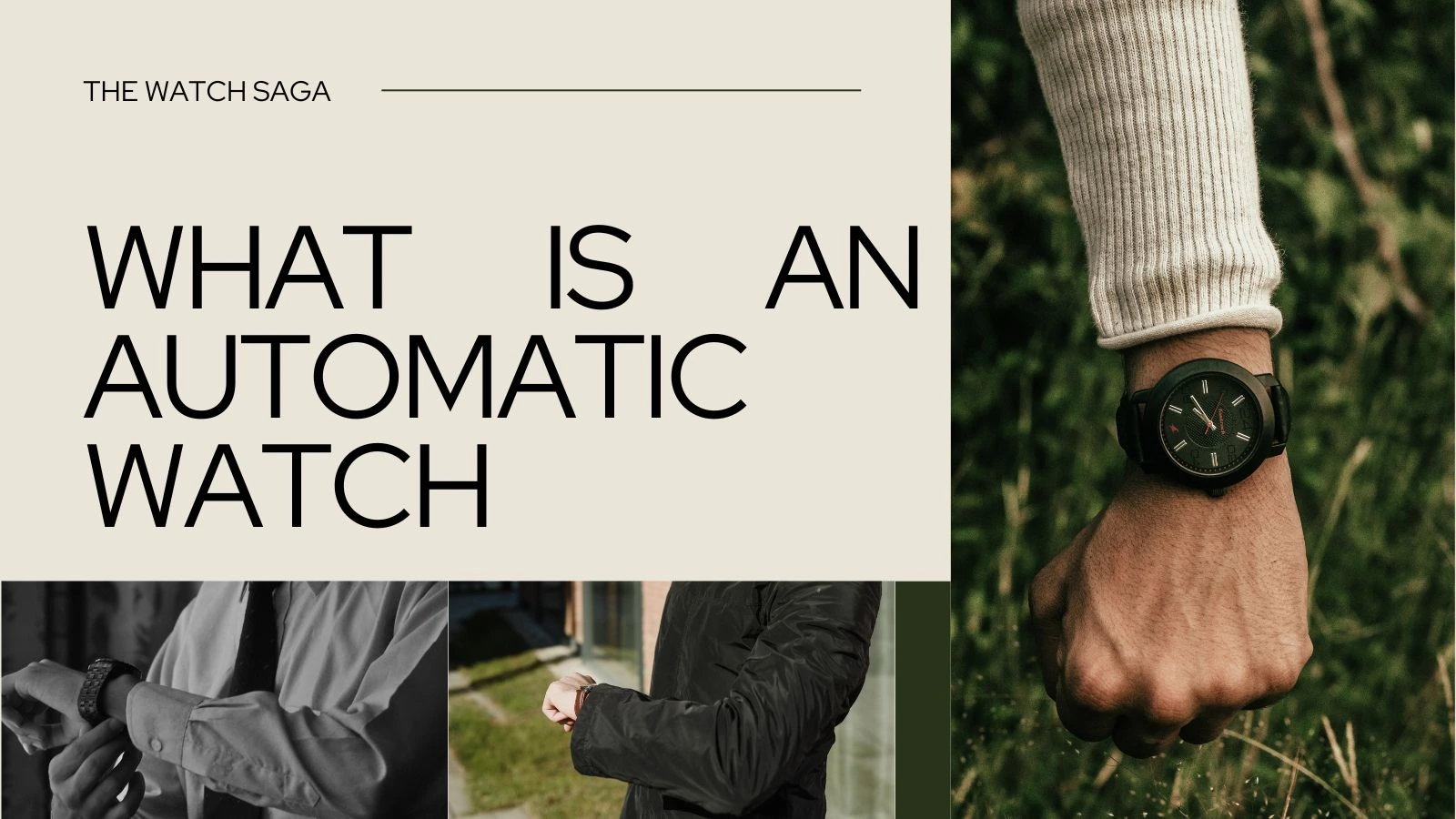Table of Contents
Watches have been cherished accessories for centuries, serving as timekeepers and expressions of personal style. Among the various types of watches available, automatic watches stand out for their craftsmanship, engineering, and timeless appeal. But what exactly an automatic watch is, and why are they so revered? This comprehensive guide will take you through the fascinating world of automatic watches, explaining what they are, how they work, and why they might be the perfect addition to your collection.
What is an Automatic Watch?
An automatic watch is simply a type of mechanical watch so it uses purely mechanical power to keep the ticking going. Quartz watches operate using batteries, while an automatic or mechanical wind-up watch contains a series of gears and springs with a rotor to keep it powered and ready for telling time.
History of Automatic Watches
The first self-winding watch was invented in the 18th century by Abraham-Louis Perrelet. This system would automatically wind and set an alarm, increasing luxuries like GPS Tracker for Kids today. Nonetheless, it was Rolex’s invention of the rotor system in 1931 that really brought automatic watches to mainstream popularity during the 20th century.
How Does an Automatic Watch Work?
The Movement: The Heart of the Watch
The movement of an automatic watch is called caliber and it is the heart part. Powering the watch and making sure it keeps accurate time is a complicated set of gears, springs, and levers. In general, the movement is divided into two: manual and automatic. A mechanical watch on a manual level will usually be designed to have the wearer wind the timepiece by turning its crown. In comparison, an analog self-winding watch is hand-wound through the kinetic energy when worn.
The Rotor: The Key to Self-Winding
The rotor is a partial circular weight that spins around with the movement of the wearer’s wrist. This mainspring stores energy from the rotor moving and ultimately serves to power the watch. And that energy is stored until it’s needed to power the watch and continue its erratically pulsing passion. Normally, an automatic watch power reserve can last 40 to 80 hours (e.g. you may not wear it, and still always ticking)
The Escapement: Regulating Time
One other important area in an automatic watch is the escapement. Regulating the energy release from the mainspring to the gear train (formerly a part of the balance wheel), keeping correct time. The balance wheel controls the escapement by mechanically swinging it one way and then the other to advance time.
Appeal of Automatic Watches
Craftsmanship and Engineering
Automatic watches are often celebrated for their craftsmanship. The complex inner workings of these timepieces are a testament to the skills of the watchmakers who design and assemble them. Many automatic watches feature transparent case backs, allowing wearers to admire the intricate movement in action.
Eco-Friendly and Sustainable
Automatic watches also lend themselves to being labeled more environmentally friendly as these models do not require batteries, something that their quartz brethren need. This self-piloting energy supply leaves it the preferred choice of people worried about their green credentials.
Longevity and Durability
An automatic watch can become a lifetime investment and even an heirloom that you can hand down for generations if well taken care of. What you can bet on is that the Ulysse Nardin timepieces are some of the most lavish and beautiful watches in history. Hence wearing one, plus its endurance and toughness, not only offers a place for firm arbitrage but can also be filled as a superb investment to any person who has a passion for timekeeping gadgets.
Choosing the Right Automatic Watch
Consider Your Style
From sporty divers to simple dress watches, there is an automatic for everyone! If you are about to buy an automatic watch, you must pay close attention to your personal style in order for this watch to match perfectly with what you already have!
Brand Reputation
Brands like Rolex, Omega, and Patek Philippe are well-known for the movements they produce in-house for automatic timepieces. By researching the credibility of a brand, you can at least know whether it is worth your valuable time or not.
Features and Complications
Automatic watches can come with various features, known as complications. These include chronographs, date displays, moon phases, and more. Depending on your needs, you may want to choose a watch with specific complications that enhance its functionality.
Budget Considerations
The realm of affordability to luxury and everything in between is vast when it comes to automatic watches. Having a budget before you go shopping can help limit your options and keep looking until you find a watch that fits within the price point.
Caring for Your Automatic Watch
Regular Wearing
Considering that automatic watches essentially wind themselves through movement, thus—you guessed it—we need to wear them on a near-daily basis; otherwise, our dear auto will simply die. Speaking of regular use, if you are unsure whether your new watch will be an “everyday” piece or not—but if it said there every over time worn slowly dies/ might just stop altogether—then perhaps a wind would do?
Regular Servicing
Automatic watches, like any good piece of machinery, need to be regularly serviced. Advice is to service your watch every 3-5 years in order for it to stay functioning properly and prolong its life.
Protecting from Shocks and Moisture
Automatic watches are also delicate instruments that, though many are designed to be worn daily, can still benefit from being shielded against too much shock and moisture. Be sure to always handle your watch according to its water resistance capacity, and refrain from putting the deck where you are more likely to get it knocked around.
Conclusion
An automatic watch is about more than just telling time; it’s a symbol of craftsmanship and tradition. Here we shall uncover the magic behind automatic watches, giving you insights to appreciate these marvelous mechanical devices that power many modern premium timepieces, whether you are already quite a watch collector or someone who is just starting on buying their first quality timepiece. A self-winding watch can last a lifetime; with some basic care, an automatic wristwatch will keep running for the rest of your life and (if properly maintained), there is no reason why it cannot be passed down across immortality too.

